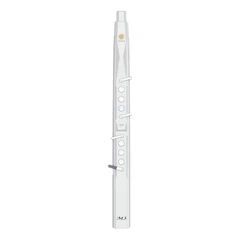Title: Mastering the Art: A Guide to Playing Electric Wind Instruments Correctly
Introduction
Electric wind instruments (EWIs) have revolutionized the way musicians approach wind playing, offering a blend of traditional techniques and modern technology. These innovative tools provide a wide array of sounds and capabilities that can be both exciting and challenging for players. To get the most out of your EWI, it's essential to understand the proper techniques and practices for playing. This article will guide you through the fundamentals of playing electric wind instruments correctly, from setting up your instrument to mastering advanced techniques.
1. Choosing the Right Equipment
Before you begin playing, it's crucial to select the right EWI for your needs. Consider factors such as the type of mouthpiece, the range of sounds you wish to produce, and the instrument's compatibility with your music style. Additionally, ensure that you have a reliable power source, whether it's batteries or an external power supply, and that all connections are secure.
2. Setting Up Your Instrument
Proper setup is key to a comfortable and effective playing experience. Adjust the mouthpiece to a comfortable angle that allows for a natural embouchure. Ensure that the instrument is positioned correctly, typically with the sensor facing slightly downward to prevent moisture buildup. Familiarize yourself with the layout of the keys or pads and any additional controls, such as pitch bend wheels or modulation levers.
3. Breath Control and Embouchure
Just like with traditional wind instruments, breath control is vital for playing an EWI. Practice maintaining a steady airflow and experiment with different pressures to achieve various dynamics. The embouchure should be relaxed but controlled, allowing the lips to vibrate freely against the mouthpiece without excessive tension.
4. Finger Technique
Finger dexterity is essential for accurate pitch and articulation. Start by mastering the basic fingerings for your chosen instrument and gradually progress to more complex patterns and scales. Regular practice will help build the muscle memory needed for quick and precise finger movements.
5. Articulation and Expression
To bring your music to life, focus on articulation and expression. Practice different tonguing techniques to achieve clarity and precision in your notes. Experiment with dynamics, phrasing, and vibrato to add emotional depth to your playing.
6. Sound Shaping
One of the most exciting aspects of playing an EWI is the ability to shape and manipulate sound. Learn how to use the instrument's built-in sound modules or external effects to create a unique sonic palette. Experiment with different settings to find the sounds that best suit your musical vision.
7. Maintenance and Care
Proper maintenance is crucial for the longevity and performance of your EWI. Clean the mouthpiece and sensor regularly to ensure optimal airflow and sound quality. Keep the instrument's exterior clean and store it in a protective case when not in use.
8. Practice and Patience
As with any musical instrument, practice is the key to mastery. Set aside regular practice time to work on technique, sound shaping, and repertoire. Be patient with your progress, as mastering an EWI requires time and dedication.
9. Performance and Recording
When performing or recording with your EWI, pay attention to the acoustics of the space and the positioning of the instrument relative to microphones or speakers. Experiment with different amplification setups to achieve the best balance and sound quality.
Conclusion
Playing an electric wind instrument correctly involves a combination of traditional wind playing techniques and an understanding of the unique capabilities of these modern instruments. By following the guidelines outlined in this article, you'll be well on your way to mastering the art of playing EWIs and unlocking the full potential of this exciting musical tool. Remember, the journey to musical mastery is a continuous one, so keep exploring, practicing, and most importantly, enjoying the process.
Brand Name: SUNRISE MELODY
Model: XR3000
Timbre: 60 types
Five octaves metal roller
Bluetooth connection
4 fingering modes available to select



